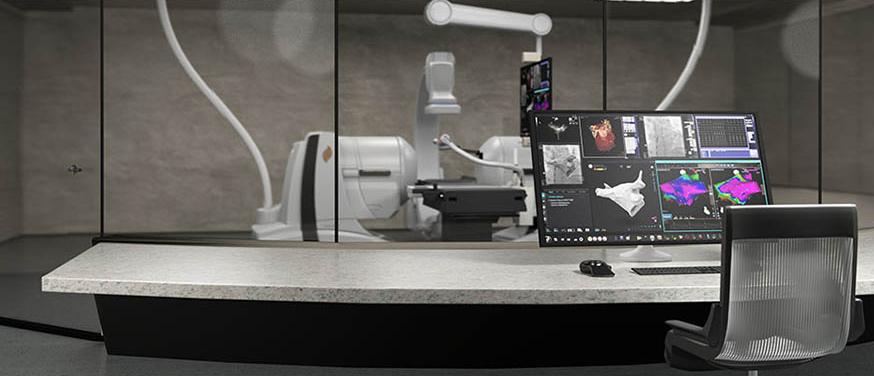
New heart treatment uses robotic navigation and high-resolution imaging
Stereotaxis and Acutus Medical have announced the first heart patients have been successfully treated using integrated Stereotaxis Robotic Magnetic Navigation and Acutus AcQMap systems.
The integrated technologies are cleared for use in Europe with additional regulatory clearances expected in the coming months.
The therapeutic approach used in these first patients combines high-resolution real-time cardiac imaging and mapping from Acutus’ AcQMap system with the unprecedented precision and stability of the Stereotaxis Robotic Magnetic Navigation system.
The integration of these advanced technologies enables physicians to clearly see a patient’s arrhythmia pattern and then reach those targets to deliver therapy with the accuracy of robotic navigation.
The first integrated procedures were conducted by Dr. Tamas Szili-Torok of Erasmus Medical Center in Rotterdam, The Netherlands.
“When you combine an advanced mapping technology that shows you the potential locations to treat the patient with a robotic technology that gets you there more rapidly, precisely and safely, you improve patient care and the physician experience simultaneously,” said Dr. Tamas Szili-Torok.
“Physicians are safer, patients are safer, procedure time may be shortened with a potential for a reduced likelihood of additional procedures.
“Integration of the technologies worked smoothly and provided an enhanced workflow. The procedures went very well, with successful treatment of patients with atrial arrhythmias in a safe and efficient fashion.”
AcQMap uses high-resolution ultrasound imaging and charge density mapping to create a clear visual display of the patient’s cardiac anatomy and arrhythmia conduction pattern in real time, informing ablation strategy beyond the pulmonary vein.
Physicians can then use Stereotaxis Robotic Magnetic Navigation to steer the catheter according to their treatment strategy, allowing for precise guidance in areas of the heart that can be challenging to access.
Physicians remain in a control room during the procedure, reducing radiation exposure.
“Precision is critical when treating cardiac arrhythmias. Understanding a patient’s specific arrhythmia conduction pattern allows a physician to intuitively navigate an ablation catheter and treat the most challenging patients,” said Vince Burgess, Chairman, President and CEO of Acutus Medical.
“The ability to iteratively re-map in less than two minutes following each ablation step further enhances the appeal of this adaptive therapeutic approach. “


